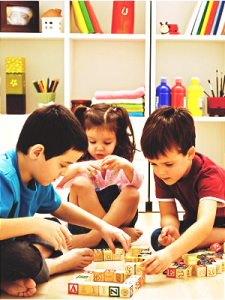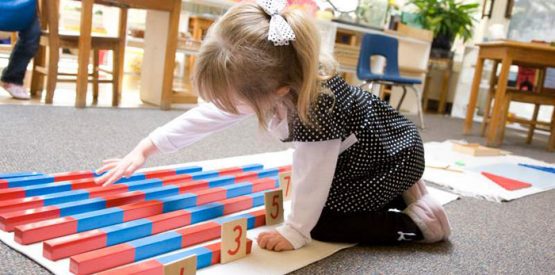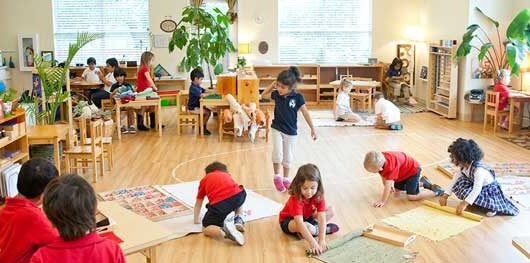Introduction to Montessori Method
A Child-Centered Educational Approach
The Montessori Method of education, developed by Dr. Maria Montessori, is a child-centered educational approach based on scientific observations of children from birth to adulthood. Dr. Montessori’s Method has been time tested, with over 100 years of success in diverse cultures throughout the world.
It is a view of the child as one who is naturally eager for knowledge and capable of initiating learning in a supportive, thoughtfully prepared learning environment. It is an approach that values the human spirit and the development of the whole child—physical, social, emotional, cognitive.

Hallmarks of Montessori
The Teacher, Child, and Environment Create a Learning Triangle
Dr. Montessori observed that children experience sensitive periods, or windows of opportunity, as they grow. As their students develop, Montessori teachers match appropriate lessons and materials to these sensitive periods when learning is most naturally absorbed and internalized.
In early childhood, Montessori students learn through sensory-motor activities, working with materials that develop their cognitive powers through direct experience: seeing, hearing, tasting, smelling, touching, and movement.

Core Components of Montessori
As Recognized by the American Montessori Society
While there are many components that are integral to quality Montessori implementation, the American Montessori Society recognizes 5 core components as essential in Montessori schools—properly trained Montessori teachers, multi-age classrooms, use of Montessori materials, child-directed work, and uninterrupted work periods. Fully integrating all of them should be a goal for all Montessori schools.

It is not true that I invented what is called the Montessori Method… I have studied the child; I have taken what the child has given me and expressed it, and that is what is called the Montessori Method.
